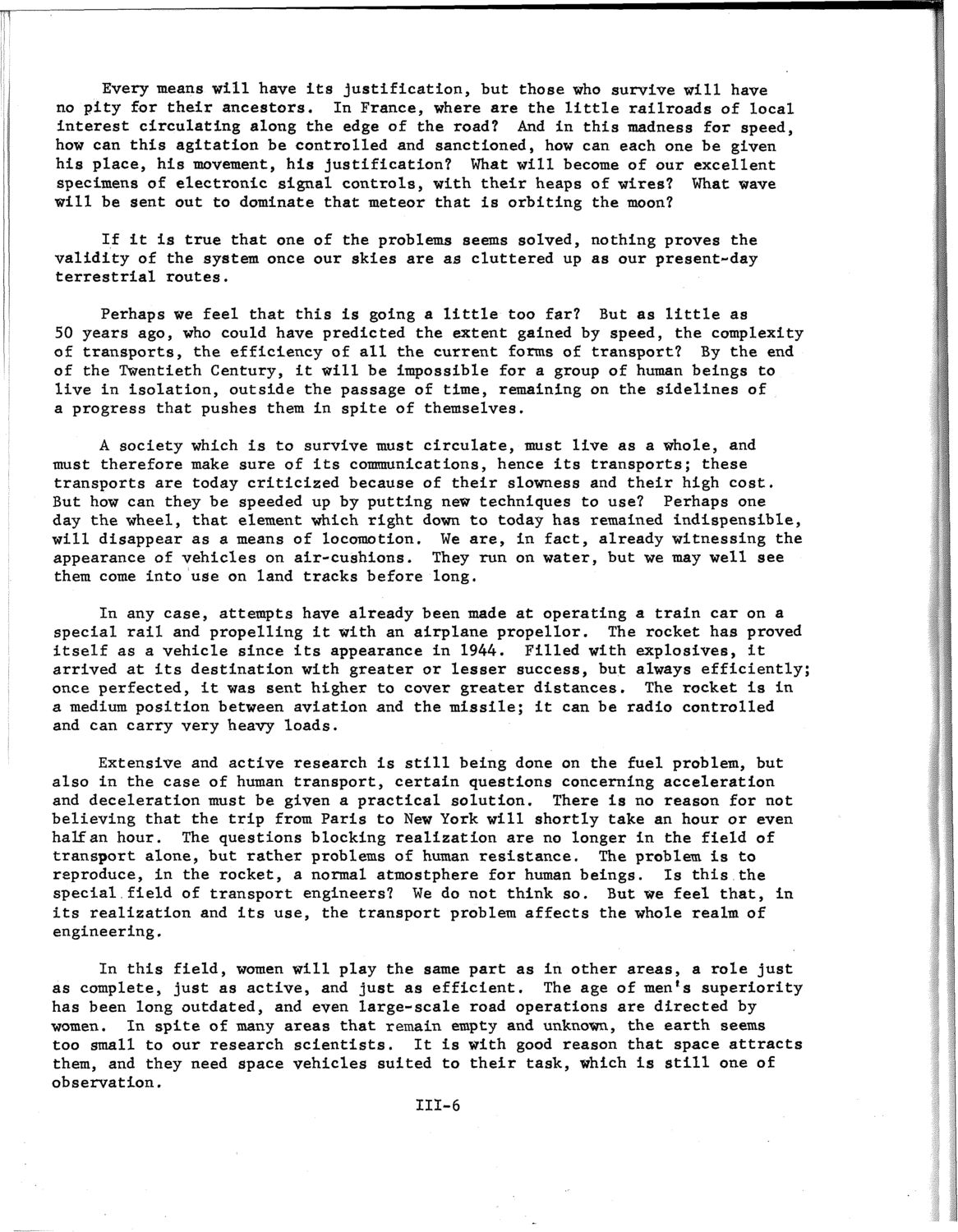| |
| |
Caption: SWE - Proceedings of the First International Conference of Women Engineers and Scientists
This is a reduced-resolution page image for fast online browsing.

EXTRACTED TEXT FROM PAGE:
Every means will have its justification, but those who survive will have no pity for their ancestors. In France, where are the little railroads of local interest circulating along the edge of the road? And in this madness for speed, how can this agitation be controlled and sanctioned, how can each one be given his place, his movement, his justification? What will become of our excellent specimens of electronic signal controls, with their heaps of wires? What wave will be sent out to dominate that meteor that is orbiting the moon? If it is true that one of the problems seems solved, nothing proves the validity of the system once our skies are as cluttered up as our present-day terrestrial routes. Perhaps we feel that this is going a little too far? But as little as 50 years ago, who could have predicted the extent gained by speed, the complexity of transports, the efficiency of all the current forms of transport? By the end of the Twentieth Century, it will be impossible for a group of human beings to live in isolation, outside the passage of time, remaining on the sidelines of a progress that pushes them in spite of themselves. A society which is to survive must circulate, must live as a whole, and must therefore make sure of its communications, hence its transports; these transports are today criticized because of their slowness and their high cost. But how can they be speeded up by putting new techniques to use? Perhaps one day the wheel, that element which right down to today has remained indispensible, will disappear as a means of locomotion. We are, in fact, already witnessing the appearance of vehicles on air-cushions. They run on water, but we may well see them come into use on land tracks before long. In any case, attempts have already been made at operating a train car on a special rail and propelling it with an airplane propellor. The rocket has proved itself as a vehicle since its appearance in 1944. Filled with explosives, it arrived at its destination with greater or lesser success, but always efficiently; once perfected, it was sent higher to cover greater distances. The rocket is in a medium position between aviation and the missile; it can be radio controlled and can carry very heavy loads. Extensive and active research is still being done on the fuel problem, but also in the case of human transport, certain questions concerning acceleration and deceleration must be given a practical solution. There is no reason for not believing that the trip from Paris to New York will shortly take an hour or even half an hour. The questions blocking realization are no longer in the field of transport alone, but rather problems of human resistance. The problem is to reproduce, in the rocket, a normal atmostphere for human beings. Is this the special.field of transport engineers? We do not think so. But we feel that, in its realization and its use, the transport problem affects the whole realm of engineering. In this field, women will play the same part as in other areas, a role just as complete, just as active, and just as efficient. The age of men's superiority has been long outdated, and even large-scale road operations are directed by women. In spite of many areas that remain empty and unknown, the earth seems too small to our research scientists. It is with good reason that space attracts them, and they need space vehicles suited to their task, which is still one of observation. III-6
| |